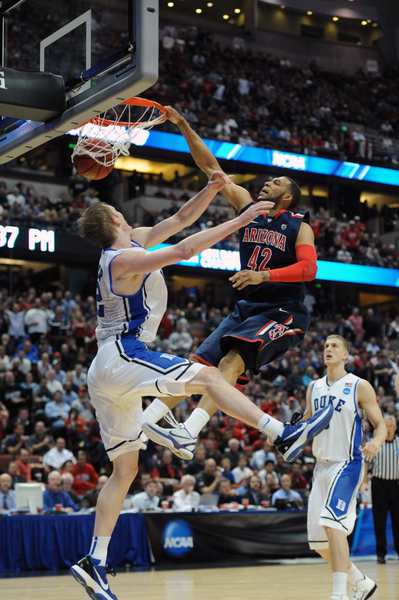Study: What’s the Value of an Elite CBB Player? At Duke, Over a Million Bucks Annually…
Posted by rtmsf on September 12th, 2011An AP report released on Monday provided an interesting insight into the actual fair market value of ‘amateur’ athletes at the Division I football and men’s basketball level. The report, a joint venture between an advocacy group for athletes called the National College Players Association and Drexel University professor Ellen J. Staurowsky called “The Price of Poverty in Big Time College Sport,” outlines a methodology that results in the assignation of six-figure values for each and every D-I athlete in the two major revenue sports. The average college football player, for example, is worth approximately $121,000 per year while the average men’s hoops player is worth roughly $265,000 annually. At particularly high-exposure schools, those numbers look like chump change:
The report argues that playing big-time football and basketball is a full-time job, and an NCAA study released this year backs that up. It found that players in the Football Bowl Subdivision — the highest level — reported spending 43.3 hours per week during the season in athletic time commitment, while Division I men’s basketball players reported 39 hours a week in season. The report said that players at the most powerful programs are worth far in excess of even the average athlete. The report estimates that Duke’s basketball players are worth the most, at around $1 million each, while Texas’ football players top that sport at $513,000 each.
Of course, such an accounting of fair market value in a professional-style format is anathema to the foundation of amateurism that the NCAA relies upon. The governing organization has long argued that it has no interest in paying players a dime above and beyond the value of attending college and its room/board incidentals, but the report argues that this stance leaves most players several thousand dollars short and living “below the [federal] poverty line at around 85 percent of schools.” Not having enough money around to order a pizza, fill up the car, or worse, make an emergency trip home leaves student-athletes even more susceptible than they already are to taking illicit benefits from boosters. Even if you question how an athlete living large on a pretty campus with food, room, and board can be living below the poverty line makes sense, the logic behind pocket cash is clearly a solid contention.
Keep in mind, of course, that this report is unquestionably a partisan one. Its writers are quite clearly advocating for the student-athletes, and we’re not versed well enough in econometrics to determine whether the report’s numbers are within reason or considerably inflated especially when the full report hasn’t been released yet. But what we can get on board with is this statement discussing the people getting rich off the system as it is currently set up:
The NCAA’s definition of amateurism has proven to be priceless to obscenely paid coaches, athletics administrators, and colleges [. . .]
We need look no further than the billions of dollars schools are currently chasing in the conference realignment rat race to understand this. If, for example, Texas A&M joins the SEC and gets a bigger piece of the television pie down the road, its administrators get bigger contracts and the coaches stand to gain from the corresponding better facilities and exposure. What exactly do the players get out of the deal? A bigger weight room? Chick-fil-A rather than ARAMARK? More pairs of athletic socks? Although we’re not sure where we ultimately settle on paying players, we’re certain about one thing: with as much money flowing through the revenue sports, the players should never have to beg friends and family for the basic needs of a college kid like ordering a pizza, buying a t-shirt on occasion, or going to a movie with your buddies. Chris Webber had that part right nearly two decades ago — the part about needing to borrow money to buy his own jersey — long before conference television packages were worth astronomical figures and it came out that Webber himself was on the take to the tune of $260,000.
The full report releases on Tuesday at which time we will have a more thorough analysis including any potential suggestions the group may have for differing stipends/payments for student-athletes of different production levels and the effect that payments may have on scholarship opportunities in non-revenue-generating sports.











































